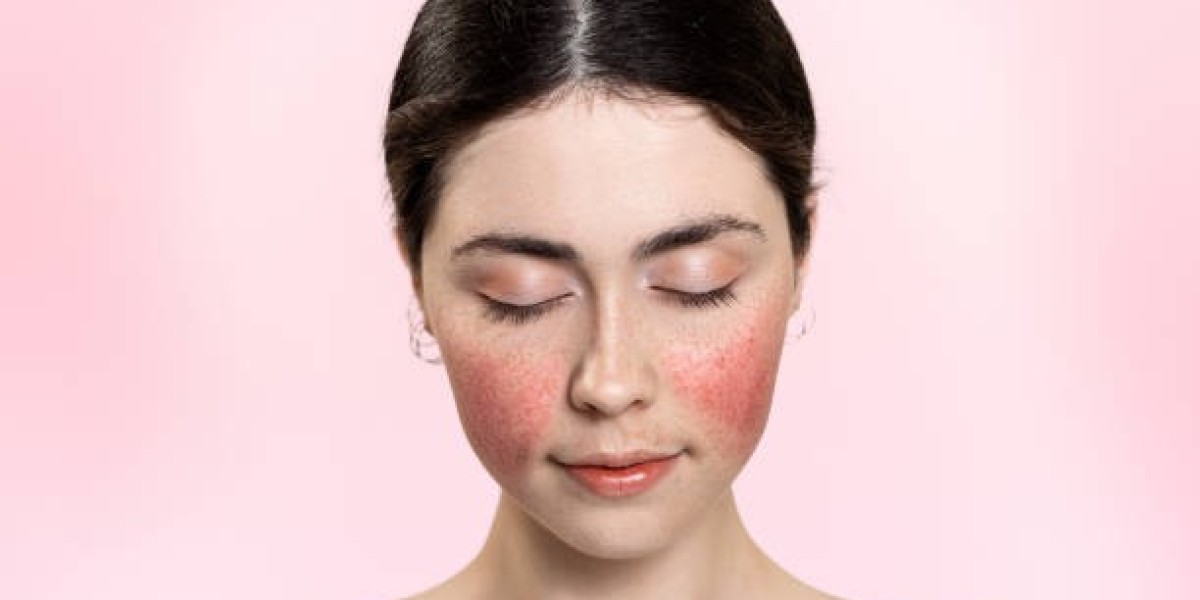Rosacea is a chronic skin condition characterized by facial redness, visible blood vessels, and sometimes pimples or pustules, primarily affecting the central face. While the exact cause of rosacea remains unclear, research suggests that it may involve a combination of genetic, environmental, vascular, and inflammatory factors. Intriguingly, rosacea has been observed to coexist with or have associations with other skin conditions, indicating potential common pathways or shared triggers. Rosacea treatment in Islamabad Pakistan Understanding these links can provide insights into rosacea's complexity and guide more effective management strategies.
Acne Vulgaris:
Though rosacea and acne vulgaris (common acne) are distinct conditions, they share similarities such as the presence of pimples and pustules. Unlike acne, rosacea does not involve comedones (blackheads and whiteheads) and typically affects older adults. The coexistence of both conditions in some individuals can complicate diagnosis and treatment. It is essential to accurately distinguish between them because treatments for acne, like topical retinoids and benzoyl peroxide, may aggravate rosacea symptoms.
Seborrheic Dermatitis:
Seborrheic dermatitis, a condition characterized by flaky scales and red skin primarily on the scalp and face, can co-occur with rosacea. This overlap may be due to shared inflammatory pathways or triggers like yeast (Malassezia species) that thrive on the skin's surface. Managing both conditions simultaneously requires a delicate balance to avoid exacerbating either condition, often involving gentle skincare and anti-inflammatory treatments.
Psoriasis:
Psoriasis is an autoimmune condition marked by rapid skin cell turnover, leading to thick, scaly plaques on the skin. While psoriasis and rosacea are distinct in their appearance and underlying mechanisms, individuals can suffer from both, suggesting a possible common inflammatory or immune background. Treatment strategies usually focus on addressing each condition separately with an emphasis on minimizing systemic inflammation.
Eczema (Atopic Dermatitis)
Eczema or atopic dermatitis involves dry, itchy, and inflamed skin. Though eczema commonly affects areas like the elbows, knees, and neck, facial involvement can mimic or coincide with rosacea, particularly in terms of redness and irritation. Both conditions can be driven by barrier dysfunction and inflammatory responses, requiring a careful approach to skin care and treatment to restore skin health and relieve symptoms.
Demodex Folliculorum Infestations:
Demodex folliculorum, a type of mite that lives on human skin, has been found in higher densities in individuals with rosacea, particularly those with the subtype involving papules and pustules. It is thought that these mites, or the bacteria associated with them, could trigger or exacerbate rosacea's inflammatory response. Treatment may include agents effective against Demodex, such as ivermectin, alongside standard rosacea therapies.
Ocular Conditions:
Ocular rosacea, a subtype that affects the eyes, can present alongside skin symptoms or independently. It shares features with other eye conditions like blepharitis and conjunctivitis, including redness, irritation, and dryness. Proper diagnosis and treatment are crucial to prevent serious eye complications.
Rosacea and Systemic Diseases:
Emerging research suggests links between rosacea and various systemic conditions, including cardiovascular diseases, gastrointestinal disorders (such as Helicobacter pylori infection and small intestinal bacterial overgrowth), and autoimmune diseases. These associations may reflect underlying systemic inflammation or shared genetic factors.
Conclusion:
The connection between rosacea and other skin conditions underscores the complexity of dermatological diseases and the importance of a comprehensive diagnostic approach. Understanding these links can help in the development of more effective, holistic treatment strategies that address the multifaceted nature of rosacea. For individuals dealing with rosacea and coexisting conditions, a tailored treatment plan that considers all diagnoses is crucial for optimal management and improved quality of life. Collaboration between dermatologists and other healthcare providers is often necessary to address the broader health implications of these interconnected conditions.








